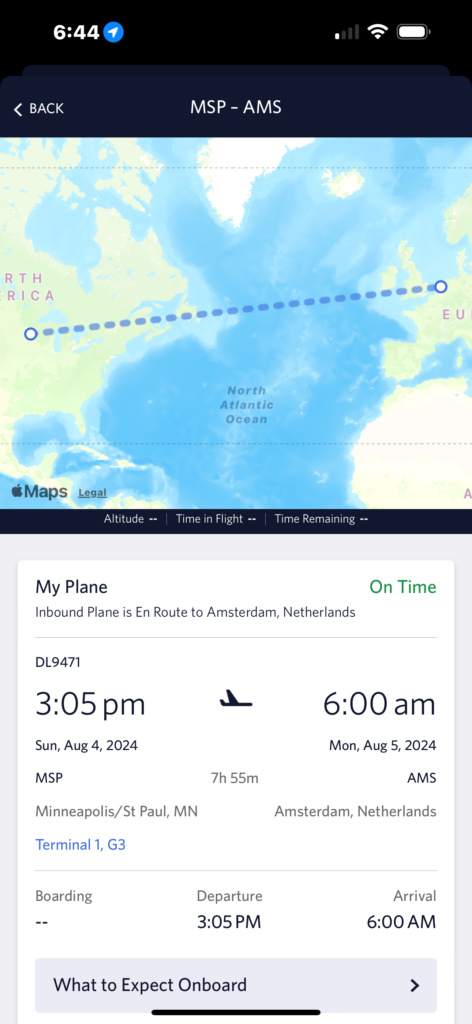Long flights can be exhausting, but with a few simple strategies, you can make the journey smoother and minimize jet lag. From movement to hydration and even making new connections, here are some of our favorite tips for long-haul travel.
Keep Moving
A little movement can go a long way in reducing jet lag. Sitting for long periods can cause stiffness, poor circulation, and even swelling in your legs and feet. Simple exercises like stretching your legs, rolling your ankles, and standing up for a few minutes can make a big difference. If you have space, try light stretches or shift positions frequently in your seat.
During layovers, take advantage of the time to walk around the terminal instead of staying seated at the gate. Once you land, keep the momentum going—choose to walk instead of using moving walkways, stretch after arriving at your accommodations, and, if possible, take a short walk outside. Fresh air and sunlight help signal to your body that it’s time to adjust to the new time zone.
Stay Hydrated & Walk Around
Long flights can be incredibly dehydrating due to the dry cabin air, so drinking plenty of water is essential to avoid jet lag. Aim to sip water consistently rather than waiting until you feel thirsty. Avoid excessive caffeine and alcohol, as they contribute to dehydration and can disrupt sleep patterns.
To help with circulation, get up and walk the aisle every hour while you’re awake—even if it’s just to stretch or visit the bathroom. These small movements prevent stiffness, reduce swelling, and help combat sluggishness. If possible, do a few calf raises or gentle stretches while standing to keep your blood flowing.
Sleep Strategically
Getting proper rest on a flight makes a huge difference in how you feel when you land. If you’re flying overnight, try to mimic your regular sleep schedule. Use an eye mask, noise-canceling headphones, or a neck pillow to get comfortable and minimize disruptions.
Once you arrive at your destination, resist the urge to nap. Staying awake until bedtime in the local time zone is key to resetting your body clock. Exposure to natural light and staying active can also help speed up your adjustment and prevent jet lag.


Fuel Up
Eating well during a flight helps maintain energy and ease the transition into a new time zone. Take advantage of in-flight meals, even if they aren’t gourmet—eating at regular intervals keeps your body’s internal clock on track.
Opt for protein-rich foods and complex carbohydrates over sugary snacks. Bringing your own healthy snacks—such as nuts, granola bars, or fruit—can help keep you full and energized. After landing, try to eat meals according to the local schedule to help your body adjust more quickly.
Meet a Friend on the Plane
One of our favorite travel tips? Talk to someone new! On a flight from Minnesota to Amsterdam, we met someone our age and talked for hours, making the time fly by. We even stayed friends after landing.
Making a friend while traveling is rare but easier than you think. Many travelers, especially those flying solo, welcome conversation. A simple chat can turn into a meaningful connection.
After a few hours of talking, we realized how valuable networking is—you never know where a connection might take you! It may feel awkward at first, but take the risk—you might just make a lifelong friend.

Leave a Reply